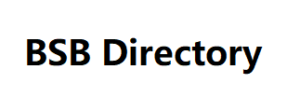How does mobile app retargeting target users who have installed your app
Mobile app retargeting is a powerful marketing strategy designed to engage and re-engage users who have already installed a mobile app. It aims to maximize the value of existing users by encouraging them to continue using the app, making purchases, or taking desired actions. This strategy is built on the principle that existing users are more likely to convert than new users. To effectively target users who have installed your app, mobile app retargeting employs several key techniques. One of the primary methods of mobile app retargeting is through personalized messaging and content. By analyzing user behavior within the app, such as their interactions, preferences, and past actions, marketers can tailor messages that resonate with individual users. This could involve sending notifications about relevant products, special offers, or updates that align with the user’s interests and history. Segmentation plays a pivotal role in retargeting.
Dynamic retargeting would display
By dividing the user base into specific segments based on demographics, behaviors, or engagement levels, marketers can create more precise campaigns. For instance, a retail app might segment users who Shadow and Reflection abandoned their shopping carts and target them with tailored ads showcasing the abandoned items or offering discounts to encourage completion of the purchase. Dynamic retargeting takes personalization a step further by showing users the exact products or content they previously interacted with. If a user viewed a particular product but didn’t make a purchase, dynamic retargeting would display that product in ads across various platforms, reminding the user of their initial interest and potentially prompting them to finalize the transaction. Social media platforms and other ad networks play a crucial role in mobile app retargeting. These platforms provide tools that allow app owners to create custom audiences composed of users who have already engaged with their app.
Reminding them of the app’s features
Advertisers can then deliver tailored ads to these audiences, reminding them of the app’s features, benefits, or ongoing promotions. Retargeting can also be achieved through email marketing. Sending personalized emails to users who have installed the app can help maintain a connection and keep them informed about updates, new B2b Phone List features, and special events. Additionally, these emails can contain targeted offers to entice users to open the app and engage further. In-app retargeting involves creating compelling messages or pop-ups that appear when a user is actively using the app. These messages can encourage users to explore new features, complete unfinished actions, or simply remind them of the value the app offers. In conclusion, mobile app retargeting is a multifaceted strategy that leverages user data, segmentation, personalization, and various advertising platforms to effectively engage users who have already installed your app.







